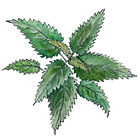OUR PHILOSOPHY

BIODYNAMICS: CONNECTING WITH NATURE
“We chose in 2016 to convert all our vineyards to organic farming and to biodynamic practices. We had recently acquired Château Fleur de Lisse and Château L’Etampe. Nature’s intelligence and monitoring its ecosystem are central to Jade Vineyards’ values. Vintage after vintage, we produce our wines, in the full respect of the terroir, our winemakers, the consumer and future generations. It’s our vision of how to run a vineyard in the 21st century. ”
Caroline Teycheney, President.

ONCE UPON A TIME THERE WAS RUDOLF STEINER
We owe this agricultural approach to the Austrian scientist and philosopher Rudolf Steiner (1861-1925). In 1924, he lays down its foundations addressing farmers’ concerns about agricultural production. They are worried about declining food and seed quality. The Steiner approach opens new perspectives. It’s based on close observation of natural phenomena. The scientist views the Earth as a “Whole”. It’s a “living entity” where balance and harmony are the unique goal for both human beings and nature. Steiner’s “Agriculture Course” brings together all his eight lectures. It lays out the basic theories and practices of this agriculture, which today, more than ever, makes sense.
WHY?
These practices aim to improve, regenerate and energize soil life. They also strengthen the vine’s immunity and encourage biodiversity. The goal is to restore unity in the ecosystems and boost inter level exchanges: from microscopic soil life to planetary influences.
THE GUIDING PRINCIPLES
Steiner offers a method with an innovative approach. Nature, the elements, minerals, plants and animals are understood in terms of terrestrial and cosmic rhythms. The fundamentals of his theory are based on three pillars: agricultural organisms, the “preparations” and cosmic rhythms.
AGRICULTURAL ORGANISMS
Biodynamics is based on a deep understanding of the laws of the “living”. The “agricultural organism” concept views each farm as a whole living entity working in harmony. All elements complement each other and outside additions are limited as much as possible.
THE PREPARATIONS
There are eight basic preparations: two preparations to spray on the soil and crops and six to add to compost. They are prepared using medicinal plants, cow dung or quartz crystals. They are applied in homeopathic doses for their energizing properties. There is no denying their impact on vine health and on the fundamental quality of our wines.

“At Jade Vineyards, we use plant based preparations. The plants, fresh or dried, are harvested from the estate. They are employed in infusions and decoctions to produce a tincture or extract the essential oils. This boosts both the vine’s natural defenses and its vigor, protects it from certain parasites and reduces sulfur and copper use during the season. ”
Nicolas Géré, Vineyard Manager.
PREPARATIONS FOR SPRAYING

THE HORN BOUSE OR “500”
Compost is made by placing cow manure inside a cow horn. It’s buried for winter and dug up in spring. This compost is then sprayed on the vines after being “energized”. It boosts soil biodiversity and stimulates root growth.

COW HORN SILICA OR “501”
It’s made from ground down quartz and is also inserted into cow horns. This preparation works mainly on the surface part of the plants. It acts as an excess of solar light for plants and stimulates their development.
PREPARATIONS FOR COMPOST

YARROW OR “502”
It plays a special role in the movement of sulfur and potash.

GERMAN CHAMOMILE OR “503”
It is linked to metabolizing calcium. It regulates nitrogen levels. It strengthens and stimulates plant growth.

NETTLE OR “504
It has a relationship with nitrogen and iron. It reinforces the action of the first two preparations. It promotes the organic process.

OAK BARK OR “505”
It has a relationship with calcium. It boosts a plant’s immunity to disease.

DANDELION OR “506”
It has a strong relationship with potash, limestone and nitrogen.

VALERIAN OR “507”
It plays a role in mobilizing phosphorous. It forms a sort of protective coat of heat around the compost.


THE DYNAMIZER
Dynamization is a concept central to biodynamics. It’s based on the idea that in nature, flowing water carries more life than stagnant water. The 500 and 501 preparations are first diluted in water then stirred before being sprayed. The preparation is stirred in one direction to make a vortex. This vortex is then broken by stirring it in the opposite direction.

WORKING WITH COSMIC RHYTHMS
The moon and the planets influence the development and growth of the vines. Awareness of their power determines our vineyard workers planting calendar (fruit, flower, roots and leaves days). This calendar is well known to both gardeners and our grandparents. Its sets out the schedule for sowing, planting, tillage, the best times for pruning, harvesting, winemaking and even racking and bottling.



SENSITIVE CRYSTALLIZATION TECHNIQUE
Nicolas Géré works closely with « sensitive crystallization « specialist, Margarethe Chapelle (Laboratoire Œnocristal). A product’s natural energetic qualities are revealed with this method centered on the crystallization of copper chloride. For grape growing, it allows us to not only determine a vintage’s profile but also to identify and correct possible imbalances in the vine plant and the soil.


